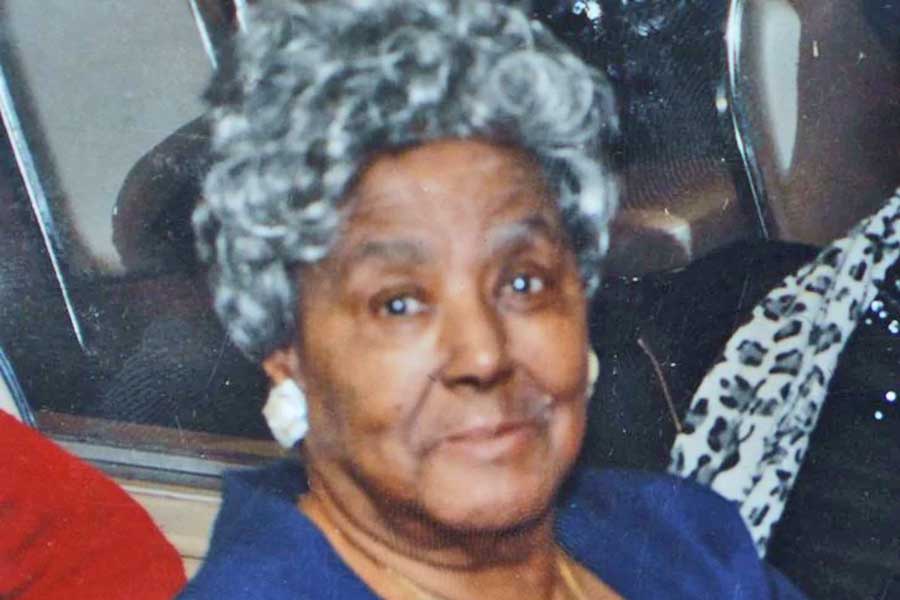Dorothy Saunders Beam, mother of the late prolific writer Joseph Beam, died Dec. 26, leaving behind a legacy of helping to amplify the voices of black gay men in America.
What Beam was most known for was extending her motherly love and support to gay African-American men who were otherwise written off by their families, said Tyrone Smith, longtime LGBTQ-rights activist.
“She was everybody’s mama and everybody’s best aunt. She could make you laugh. She could spend her time with you. She was a very intelligent woman but a very caring woman. That was just who she was,” Smith said. “Her journey was to be a mother, an educator, and somewhat of an angel for broken men. She had a spirit in her that was a repairing and healing spirit. That was something that was needed at the time.”
Beam died of advanced colon cancer, the day before the anniversary of her only child’s death. She was 94. Her funeral was held Jan. 9 at Vine Memorial Baptist Church, the church she frequented for a majority of her life.
She was born in Bulloch County, Ga., and moved to Philadelphia as a young child where she lived the remainder of her life. As a teen, Beam left high school to support her family when her mother had a stroke. She operated a sewing machine for the Army during the day and took classes for her high school diploma at night.
Beam later attended Cheyney University and then Temple University where she earned a master’s degree in elementary education. She taught in Philadelphia public schools for two decades, including 15 years as a counselor. Unable to give up teaching entirely, Beam worked as a substitute teacher for two days a week after her retirement at age 65.
In 1954, Beam gave birth to Joseph and raised him in West Philadelphia with her husband, Sun Beam. She began her journey into LGBTQ activism after her son died from AIDS-related complications in 1988. Beam was unaware her son was diagnosed until after his death.
Joseph Beam’s literary work explored the trials of living in America as a black gay man during the AIDS epidemic.
“When you see what came out of Joe in his writings, his mannerisms and his being, it spoke to the character that was also in his mother,” Smith explained.
Smith, 70, was a friend to Joseph Beam — he mentioned knowing the writer during his teenage years — and maintained a relationship with his mother after his passing. He remembered Beam as a “gracious, attractive, loving and caring” woman who provided “comfort when I needed to be comforted and a good hearty laugh when I needed it. It was always a pleasure to be in her company. Her voice wasn’t loud, but it would capture you.”
Before his death, Joseph Beam was working on a sequel to his book of writings from gay black authors called “In the Life: A Black Gay Anthology.” With the help of late gay poet and activist Essex Hemphill, Beam finished what her son had started and compiled “Brother to Brother: New Writings by Black Gay Men,” which was published in 1991. “Brother to Brother” chronicled the stories of black gay men living at the height of the AIDS epidemic.
Guy Weston, a writer and genealogist who knew Joseph Beam and participated in events with his mother, said it wasn’t common for parents, especially African-American parents, to be allies and advocates for their LGBTQ-identified children.
“Twenty-five or more years ago, to see anyone’s parents so assertively and aggressively advocate for LGBTQ causes or HIV-related causes was more inspiring than it is today because it was so uncommon then,” Weston said. “[Beam] paved the way for other parents and other leaders in the African-American community to stand up.”
Beam helped spread the word about AIDS and its devastation when it was less than fashionable or acceptable.
“She would ask me to go to art galleries in town where she would put out the AIDS quilt she made for Joe, talking about the devastation of AIDS and HIV in the black community. She would do it not as a teacher or an instructor, but as a black woman sharing her own story,” Smith said. “That’s the part of her that she gave from within that made it easy for folks to connect to.”
In the ’90s, Beam volunteered weekly at We the People Living with AIDS/HIV of the Delaware Valley, a now-defunct HIV-advocacy organization, providing meals to men who were living with the virus.
Weston recalled his experience working as a volunteer at Philadelphia Community Health Alternatives — now known as Mazzoni Center. He helped put up posters about HIV-prevention on buses and trains in 1986, and Weston said at the time, “black people complained about it because HIV was not a disease that affected black people.”
“For Beam to show up at her son’s reading [of “In the Life”] at Giovanni’s Room and to later go on to be an advocate after he died meant a lot during that time,” Weston added. “I remember doing radio interviews with her and feeling the motherly warmth that would have otherwise been absent for many of us who couldn’t share our experiences about being gay or having HIV with our own mothers.”
Beam worked to honor her son’s legacy through her support of the LGBTQ community, along with her efforts to keep his writings alive. She helped to establish the Joseph F. Beam Memorial Scholarship Fund for creative writing students at Temple University. In 1992, Beam donated her son’s personal papers to the Schomburg Center for Research in Black Culture in New York City.
